#1857 mutiny
Photo

The Christmas Mutiny of 1857
On 21 July 1857, a whaler named Junior left New Bedford for the Greenland Whaling Grounds in the Sea of Okhotsk near Japan. The voyage got off to a bad start as the sailors were served terrible food. There were three barrels of mouldy bread and a large amount of rotten meat filled with maggots left over from a previous voyage. When it finally got so bad that the men became ill, 24-year-old Cyrus Plummer and the other men on his watch went straight to 27-year-old Captain Archibald Mellen, still a very inexperienced captain, to complain.
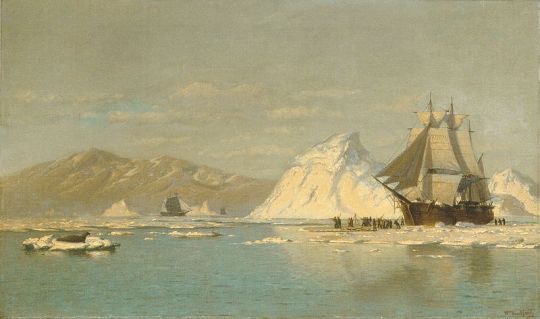
Off Greenland—Whaler Seeking Open Water - by William Bradford between 1823-1892 (x)
Plummer was a boat steerer and harpooner who harpooned the whale and then sat in the back of the whaleboat and took the rudder. He was not afraid of whales or people. The mistake he made was that he went over his superior, First Mate William Nelson. The first officer known for being a cruel man, got the opportunity to take revenge one day when Plummer was on watch at the wheel. Plummer had been fascinated watching the flight of an albatross, a giant seabird. His reverie caused him to veer slightly off course, and Nelson witnessed the incident. The mate approached and struck Plummer on the jaw. Not one to back down from a fight, Plummer struck back and they struggled on deck. When Plummer fell down and hit his head, Nelson took advantage of the situation and knocked him down without mercy. Eventually, the captain broke up the fight. Plummer was punished for insubordination for contradicting an officer or hitting him. He was hung by his thumbs in the rigging and received 20 lashes from Nelson, which he executed very happily.
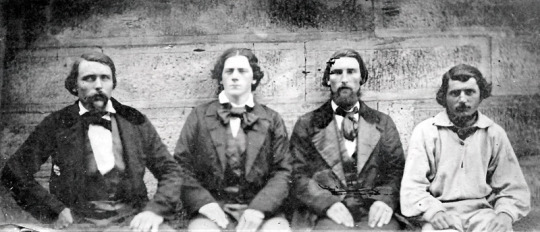
Plummer, Rike, Cartha and Stanley, 1858 (x)
Plummer recovered, but he was now obsessed with taking over the ship. He conferred with a group of sailors and they devised a plan. On Christmas night 1857, Plummer and nine of his crew, including John Hall, William Cartha, Cornelius Burns, Jacob Rike, Charles Stanley and William Herbert, called a mutiny. They killed all the officers on board except the first mate. They allowed the first mate to steer the ship to Australia. The mutineers left the ship in two whaleboats loaded with supplies. When they reached the coast, they quarrelled and split up. Six of them were captured within days, but Plummer and Cartha, Rike, and Stanley managed to get to Sydney.

Captain Mellen’s gravestone (x)
After a night of drunken escapades, Plummer's comrades-in-arms were arrested at an inn and eventually sentenced to six years in prison in the United States. Plummer escaped through an open window but was arrested a few days later for stealing gold with a new gang he had joined. In prison he learned that two of the mutineers had been hanged in Port Albert, Australia.
Cyrus Plummer was brought back to the United States and sentenced to death by hanging on 24 June 1859. Just hours before his execution, the lucky mutineer's sentence was commuted to life imprisonment by President James Buchanan.

Plummers letter to the President to ask for his mercy (x)
Fifteen years later, the aged and ailing Plummer was pardoned by President Ulysses S. Grant. He was released from prison to freedom on 24 July 1874.
30 notes
·
View notes
Text

The Indian Revolt
Karl Marx for the New-York Daily Tribune
[September 16, 1857, page 6]
London, Sept 4, 1857.
The outrages committed by the revolted Sepoys in India are indeed appalling, hideous, ineffable — such as one is prepared to meet – only in wars of insurrection, of nationalities, of races, and above all of religion; in one word, such as respectable England used to applaud when perpetrated by the Vendeans on the “Blues,” by the Spanish guerrillas on the infidel Frenchmen, by Servians on their German and Hungarian neighbors, by Croats on Viennese rebels, by Cavaignac’s Garde Mobile or Bonaparte’s Decembrists on the sons and daughters of proletarian France. However infamous the conduct of the Sepoys, it is only the reflex, in a concentrated form, of England’s own conduct in India, not only during the epoch of the foundation of her Eastern Empire, but even during the last ten years of a long-settled rule. To characterize that rule, it suffices to say that torture formed an organic institution of its financial policy. There is something in human history like retribution: and it is a rule of historical retribution that its instrument be forged not by the offended, but by the offender himself.
The first blow dealt to the French monarchy proceeded from the nobility, not from the peasants. The Indian revolt does not commence with the Ryots, tortured, dishonored and stripped naked by the British, but with the Sepoys, clad, fed, petted, fatted and pampered by them. To find parallels to the Sepoy atrocities, we need not, as some London papers pretend, fall back on the middle ages, not, even wander beyond the history of contemporary England. All we want is to study the first Chinese war, an event, so to say, of yesterday. The English soldiery then committed abominations for the mere fun of it; their passions being neither sanctified by religious fanaticism nor exacerbated by hatred against an overbearing and conquering race, nor provoked by the stern resistance of a heroic enemy. The violations of women, the spittings of children, the roastings of whole villages, were then mere wanton sports, not recorded by Mandarins, but by British officers themselves.
Even at the present catastrophe it would be an unmitigated mistake to suppose that all the cruelty is on the side of the Sepoys, and all the milk of human kindness flows on the side of the English. The letters of the British officers are redolent of malignity. An officer writing from Peshawur gives a description of the disarming of the 10th irregular cavalry for not charging the 55th native infantry when ordered to do so. He exults in the fact that they were not only disarmed, but stripped of their coats and boots, and after having received 12d. per man, were marched down to the river side, and there embarked in boats and sent down the Indus, where the writer is delighted to expect every mother’s son will have a chance of being drowned in the rapids. Another writer informs us that, some inhabitants of Peshawur having caused a night alarm by exploding little mines of gunpowder in honor of a wedding (a national custom), the persons concerned were tied up next morning, and “received such a flogging as they will not easily forget.” News arrived from Pindee that three native chiefs were plotting. Sir John Lawrence replied by a message ordering a spy to attend to the meeting. On the spy’s report, Sir John sent a second message, “Hang them.” The chiefs were hanged. An officer in the civil service, from Allahabad, writes: “We have power of life and death in our hands, and we assure you we spare not.” Another, from the same place: “Not a day passes but we string up front ten to fifteen of them (non-combatants).” One exulting officer writes: “Holmes is hanging them by the score, like a ‘brick.’” Another, in allusion to the summary hanging of a large body of the natives: “Then our fun commenced.” A third: “We hold court-martials on horseback, and every nigger we meet with we either string up or shoot.” From Benares we are informed that thirty Zemindars were hanged on the mere suspicion of sympathizing with their own countrymen, and whole villages were burned down on the same plea.
An officer from Benares, whose letter is printed in The London Times, says: “The European troops have become friends when opposed to natives.” And then it should not be forgotten that, while the cruelties of the English are related as acts of martial vigor, told simply, rapidly, without dwelling on disgusting details, the outrages of the natives, shocking as they are, are still deliberately exaggerated. For instance, the circumstantial account first appearing in The Times, and then going the round of the London press, of the atrocities perpetrated at Delhi and Meerut, from whom did it proceed? From a cowardly parson residing at Bangalore, Mysore, more than a thousand miles, as the bird flies, distant from the scene of action. Actual accounts of Delhi evince the imagination of an English parson to be capable of breeding greater horrors than even the wild fancy of a Hindoo mutineer. The cutting of noses, breasts, &c., in one word, the horrid mutilations committed by the Sepoys, are of course more revolting to European feeling than the throwing of red-hot shell on Canton dwellings by a Secretary of the Manchester Peace Society, or the roasting of Arabs pent up in a cave by a French Marshal, or the flaying alive of British soldiers by the cat-o’-nine-tails under drum-head court-martial, or any other of the philanthropical appliances used in British penitentiary colonies. Cruelty, like every other thing, has its fashion, changing according to time and place. Caesar, the accomplished scholar, candidly narrates how he ordered many thousand Gallic warriors to have their right hands cut off. Napoleon would have been ashamed to do this. He preferred dispatching his own French regiments, suspected of republicanism, to St. Domingo, there to die of the blacks and the plague.
The infamous mutilations committed by the Sepoys remind one of the practices of the Christian Byzantine Empire, or the prescriptions of Emperor Charles V’s criminal law, or the English punishments for high treason, as still recorded by Judge Blackstone. With Hindoos, whom their religion has made virtuosi in the art of self-torturing, these tortures inflicted on the enemies of their race and creed appear quite natural, and must appear still more so to the English, who, only some years since, still used to draw revenues from the Juggernaut festivals, protecting and assisting the bloody rites of a religion of cruelty.
The frantic roars of the “bloody old Times,” as Cobbett used to call it – its, playing the part of a furious character in one of Mozart’s operas, who indulges in most melodious strains in the idea of first hanging his enemy, then roasting him, then quartering him, then spitting him, and then flaying him alive — its tearing the passion of revenge to tatters and to rags – all this would appear but silly if under the pathos of tragedy there were not distinctly perceptible the tricks of comedy. The London Times overdoes its part, not only from panic. It supplies comedy with a subject even missed by Molière, the Tartuffe of Revenge. What it simply wants is to write up the funds and to screen the Government. As Delhi has not, like the walls of Jericho, fallen before mere puffs of wind, John Bull is to be steeped in cries for revenge up to his very ears, to make him forget that his Government is responsible for the mischief hatched and the colossal dimensions it has been allowed to assume.
#Karl Marx#1857#Sepoy#revolt#mutiny#uprising#colonialism#eurocentrism#India#British#New-York Tribune
5 notes
·
View notes
Text
At Kashmere Gate

View On WordPress
0 notes
Text
Posted to India in 1856, Captain Longueville Clarke was appointed to the 3rd Oudh Irregular Infantry, and shortly thereafter sat for this portrait. His career was cut short when he was killed during the Indian Mutiny the following year.
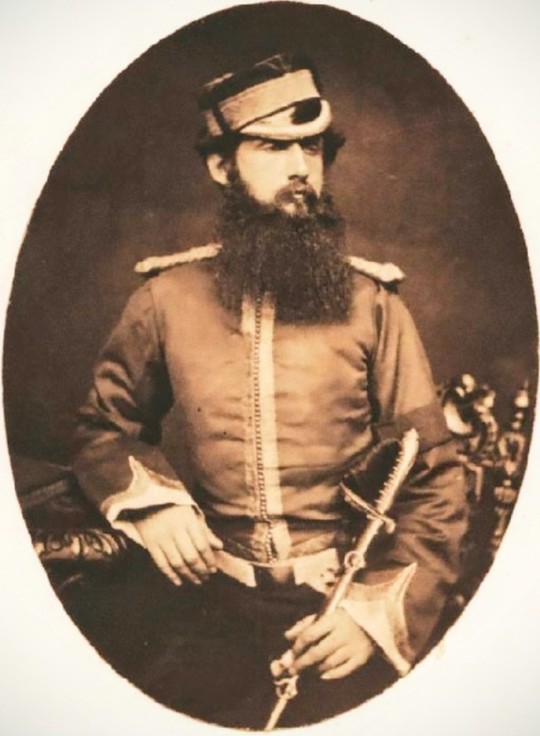
1 note
·
View note
Text
Book Review And Analysis of 'Murder At Mushaira' by Raza Mir : Dastan-ae-Shayarana Sherlock
In Raza Mir’s ‘Murder At Mushaira’ when poet laureate Ghalib first enters into the thick of events, we see him as a bit snobbish, witty and rebellious man of rationale. All these characteristics are very much Sherlockian. The similarity does not end here. Like Sherlock, Ghalib is not political but aware of politics of its time. Like Sherlock, Ghalib is not a Jack-Of-All-Trades but he has ability…

View On WordPress
#1857#Book Review#Dagh#Delhi#Fiction#First War of Indian Independence#Ghalib#Historical Fiction#History#Laal Quila#Literature#Modern India#Murder At Mushaira#Mutiny#Raza Mir#Red Fort#Revolt#Suspense#Thriller#Umarao Begum#Whodunit
1 note
·
View note
Text
youtube
#The Revolt Of 1857 | Sepoy Mutiny | Modern Indian History | Srinivasa Rao | Tone Academy#Revolt of 1857#This video takes us through the following:#-The Break out of the Revolt#- Rulers and Leaders involved#- Role of the Rulers and Leaders during the Revolt#- British Officers who suppressed the Revolt#revolt_of_1857#sepoymutiny#modernindianhistory#toneacademy#Subscribe to : https://bit.ly/2YQOgbs#https://www.youtube.com/playlist?list...#Youtube
0 notes
Text
DAY 5926
Jalsa, Mumbai May 9/10, 2024 Thu/Fri 12:22 AM
Birthday Greetings for May 10th , 2024
Saddened to hear the news of the passing away of Shri Ratan Lal Bhutoria , Father of our dear Ef Rohit Kumar Bhutoria .. Rohit's Father met with a road accident this morning and unfortunately could not survive .. as informed by Ef Sanjay Patodiya .. 😔🙏🏻 .. deeply shocked and grieved .. our very sincerest condolences to you , Rohit .. we hold your hand .. be strong .. the whole Ef Family with you .. in prayer and support .. 🙏🏻
..
Hard to put anything after this 💔 .. but the occasion for it's greatness I think it deserves a mention .. 🙏🏻
..
A bit of historic ”gyaan” today .. 🙏🏻
:
10 May In Indian History :
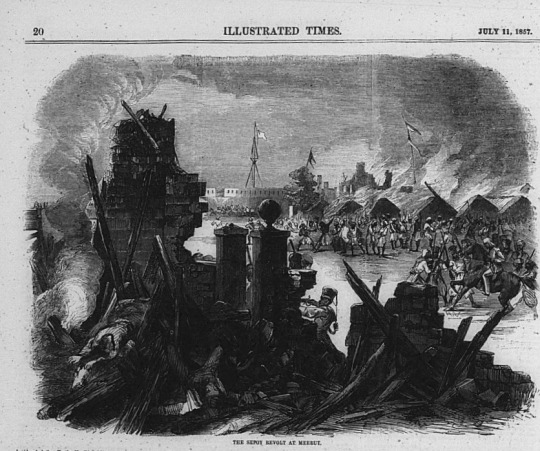
.. 10th May 1857 .. the great Indian rebellion .. the 1st war of independence against the British at Meerut .. the rebellion began in the form of a mutiny of sepoys of the East India Company's army in the garrison town of Meerut ..
Meerut is situated between the holy rivers Ganga and Yamuna ..
Thanks to its geographical importance, the fertile Ganga-Yamuna doab had been an important centre of human activities since the very early times of Vedic Civilisation.
From the medieval period onwards, the proximity of this city to Indraprastha (present day Delhi) helped it play an important role in the affairs of India.
With the capture of power by the British, Meerut became a major military centre. The aggrieved Indian soldiers of the British Army began their fight against the imperial powers in this soil on 10th May, 1857. They captured the control of the city in one day and marched to Red Fort in Delhi, which was considered to be the symbol of control over the whole of India. On their way, they were joined by the common people who shouted patriotic war cries. By the next morning, Red Fort had fallen into the hand of the freedom fighters.
..
Few pictures of India from 1857 ..
Lucknow .. 1857 ..
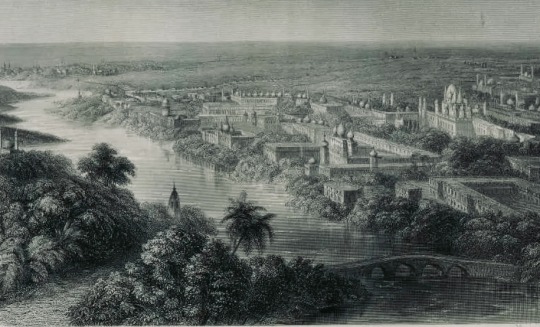
Calcutta .. 1853 ..

Taj Mahal .. Agra .. 1857 ..
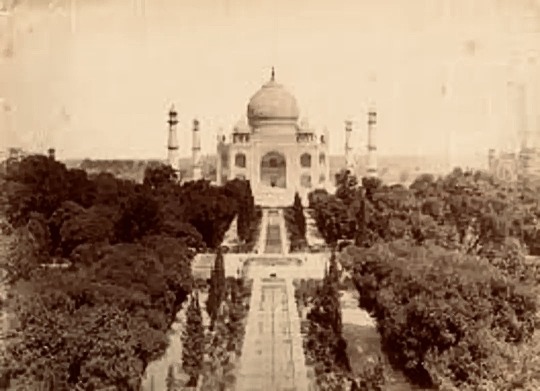
Jantar Mantar near Delhi .. 1858 ..
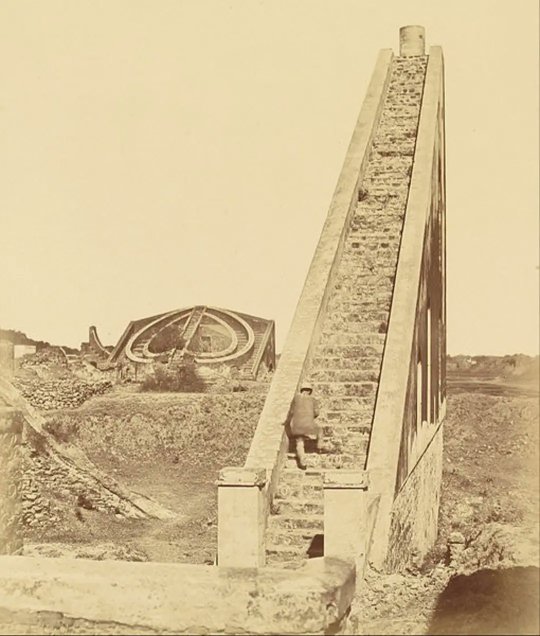
James Outram's Camp at Alumbagh, Lucknow .. It was occupied by Outram and his 4000 Soldiers After the 1857 Mutiny ..

Humayun's Tomb in Delhi .. 1858 ..
See how the change has taken place .. this is the same location where we shot the song from UUNCHAI, the film of Sooraj Barjatya, pictures of which had been put up here at the Blog
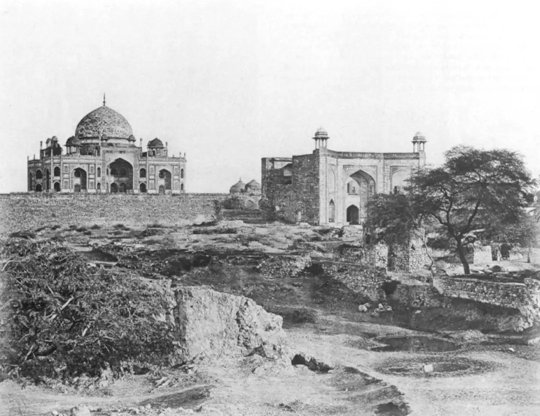
A Sikh cavalry .. Illustrated Times .. 1857 ..
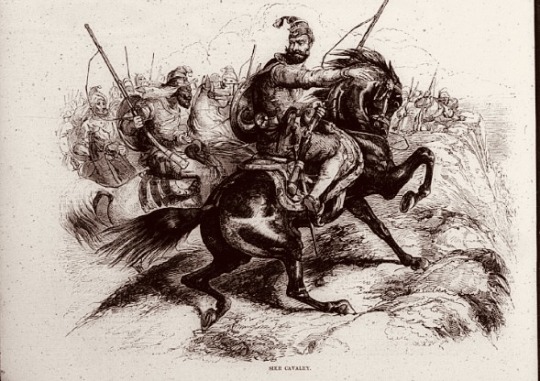
..
Jai Hind .. 🇮🇳🫡🕉️🙏🏻
Love .. ❤️🙏🏻
It has been a bit of a history lesson .. and after which it would be too severe to write anymore .. but simply to say , that the time at the Studio Saptaswar was visited after many an hour and days .. and the sonorous sounds for an upcoming film of Abhishek .. and of my own Section 84 , was I felt , in keeping with the moment and the story and the emotion ..

Amitabh Bachchan
100 notes
·
View notes
Photo

A map illustrating the extent and composition of the British Raj (from Hindi for kingdom, government) - a period of direct British rule over the subcontinent of India that started in 1858. After the Sepoy Mutiny of 1857, the Act for the Better Government officially transferred the administration of India from the East India Company to the British government, Bahadur Shah, the last Mughal Emperor...
33 notes
·
View notes
Text
Analysis of Ganji Gupta
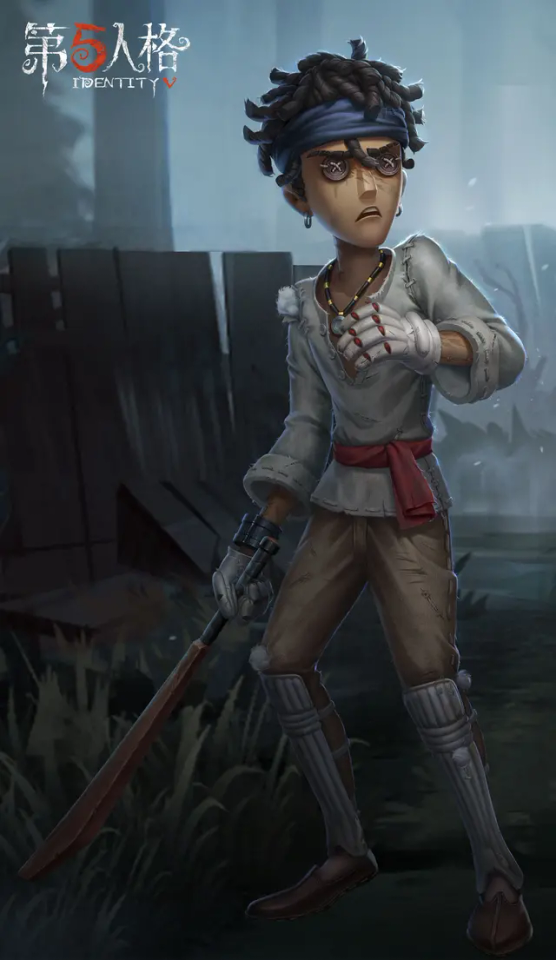
Ganji was born in India during a time when Britain still ruled over it.
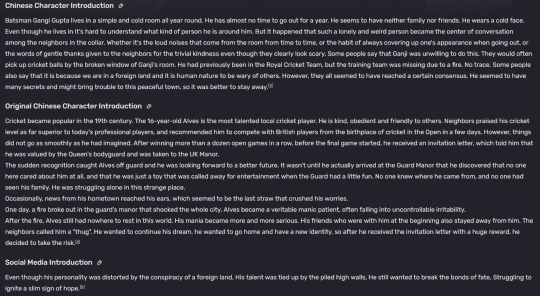
Britain came to India after a sea route connecting Europe to India was found, and Britain initially came due to the economic prospects of trade, but eventually this turned into the desire to acquire territory.
The British presence in India began with the establishment of the British East India Company (the British government having no authority over them at this time). Initially, the focus was trade and acquiring goods such as silk, cotton, spices, and more. Trading posts were established and British communities developed, but eventually they started to meddle in Indian politics and transformed from a trading company to a ruling one. It was at this point that the British attitude towards Indians degenerated (a sense of superiority vs inferiority formed, biased views regarding non-western cultures arose, British disdain increased, and so on). Racism, frustration from the British forcing their own way of doing things (including the English language) on them, policies benefiting the British, and so on contributed to the Indian Rebellion of 1857 (aka Revolt of 1857, First War of Independence, or Sepoy Mutiny).
As a result of this rebellion, the British East India Company was replaced by the British Raj, which was when the British Government took direct control from the East India Company, with Queen Victoria later proclaimed Empress of India. Britain continued to focus on profit and change beneficial to themselves, which led to subjugation and exploitation, and their views of Indians did not improve (still viewed themselves as superior, believed in stereotypes as well as believed Indians were in need of British guidance and governance to civilize them and bring them modernity).
This background is important for Ganji as it is clear this is what he experienced, especially due to Ganji’s 1st letter.
Ganji we know grew up with a talent for cricket, which was the “British national sport”.

His 2nd deduction implies he was a “prodigy”, with many people who knew him recommending him to participate in the regions “open tournament”. We know from Ganji’s trailer that he received “Love, Happiness, Hope and Pride” from playing cricket, showing how much he enjoyed the sport and how much it meant to him.


According to this same deduction, combined with Ganji’s backstory, we knew he was a “kind, obedient, and friendly” person, “mild-mannered” (aka gentle and not given to extremes of emotion, which is curious considering later on in Ganji’s story), quiet, and well-behaved. One of Ganji’s backstories states this event (where he was recommended to participate in the Open) took place when he was 16 years old.
During this competition, we know he was skilled enough to earn 12 consecutive wins. The next game after those 12 was a semi-final with the British Royal team. It does not say if Ganji won or lost that match, nor if he won the competition in general, but we do know he was skilled enough to receive an invitation from the Royal team to join them and an offer to help him train. As the deduction uses the word “exception” and applauds him for his performance, I’m assuming he did manage to at least defeat the British team and could’ve won the competition too, but it’s impossible to say for sure right now.


We do know that Ganji saw this invitation as a “good chance” and he “looked forward to a better future”. As a result, he left India with the British Royal team, where he stayed at the Queen’s Guard’s manor. Unfortunately for Ganji, it isn’t until he has arrived that he realizes the truth: “he discovered that no one here cared about him at all, and that he was just a toy that was called away for entertainment when the Guard had a little fun. No one knew where he came from, and no one had seen his family. He was struggling alone in this strange place”.
This was echoed in Ganji’s trailer, which says: “Yet when I was brought here I finally realized, These gentlemen simply needed a proper toy to play with. The funny thing is they were far from gentlemanly themselves. All they longed for were our submission and servitude”.


The terms “submission and servitude” tell us how Ganji was treated while in Britain at the Queen’s Guard’s manor. This is further emphasized by Ganji’s deduction 5, which states Ganji was only given 1 day to train, while 2 others (Oliver and Willie) were given 3 days to train. As that deduction says, despite how Ganji hoped for a better future from this opportunity, the “other sided” ended up only being a “mirage”.

Considering Ganji’s earlier invitation and how he is now being treated combined with only being given 1 training day, it seems the British didn’t want Ganji to be outstanding, which potentially could relate to the feelings of superiority discussed earlier. They didn’t want to feel inferior to someone like Ganji, and thus could further explain why they didn’t give him much training time. In the trailer, we see him picking up balls, and if this was all he was allowed to do, that’d further hurt his ability to train and improve. Lastly, Ganji was only allowed to train on Sundays, and back then, this was seen in Britain as a day of rest, when people didn’t work. This could’ve included cricket as well (there are instances of people being prosecuted for playing cricket on Sunday), which shows how much the Royal team tried to hinder Ganji’s ability to train, meaning he likely wasn’t being trained very professionally.
(If the room we see Ganji in before the fire in his trailer is the one he was given upon arriving at the manor, the state of the room could further show how the Royal Team felt about Ganji. The only identifiable items in the room are the cricket ball, as cricket is what he enjoys, and a blurry picture that we can see Ganji in, which could potentially have been of his home and thus ties to his desire to return to it.)

This fits with Ganji’s design notes which say “his social status and the agenda of politicians did not allow him to have obvious extraordinary talent”. It is because of this the design notes say Ganji’s gentle personality was forced to change into “a personality that takes strong measures to fight against fate”. (It is also right after this that it mentions Ganji being “manic”.)
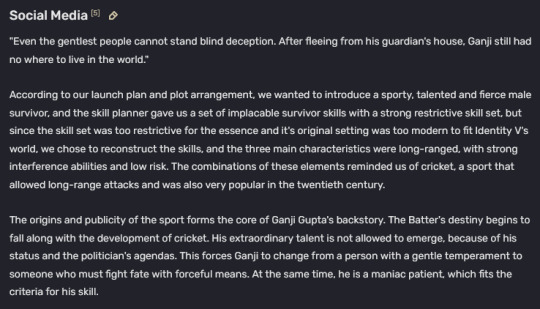
Going to Ganji’s 1st letter, it further reveals how people thought and felt about Ganji and others like him. The part where the author says they need to “take the lead so that the rest of us may get the chance to educate the foolish” fits with how we earlier discussed the British felt they had to govern and civilize the people of India for their own good. This is emphasized with how later the letter says “If it weren't for your insight, he would have spent his life in the mud without ever being touched by the empire's light” and Ganji getting “the chance to lead a civilized life”.
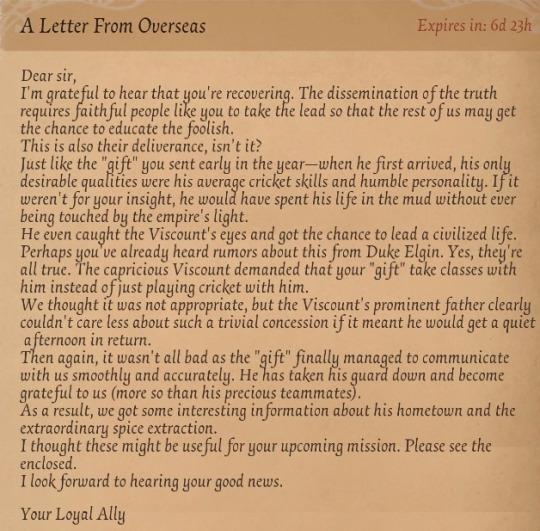
This letter describes Ganji as a “gift” with his “only desirable qualities” being his “average cricket skills and humble personality”. Their sense of superiority is clear hear considering they call Ganji’s skills “average”, yet we know he was talented considering he at least managed to receive 12 consecutive wins in the competition, while the comment about Ganji being “humble” could tie in to how Ganji in his trailer says they just wanted “our submission and servitude”.
Despite how badly Ganji was treated, the one exception was the son of the owner of the Queen’s Guard’s manor. We know he was friendly to Ganji based on Ganji’s deduction 6, which is title “relieved” and shows that the kid thought Ganji was “brilliant” and asked Ganji to play with him. It is possible Ganji is the one who feels “relieved”, and that could be due to actually finding someone friendly in this place. In the JP and CN versions, it potentially has the kid use the term “big brother” for Ganji, so altogether, the kid was likely being honest about his feeling regarding Ganji’s skills and honestly just wanting a real playmate (rather than a toy like the others saw Ganji as).

In this same deduction, it mentions a “well-made board” that has Ganji’s name carved in it. As this is the deduction that involves the son of the manor owner of the Queen’s Guard, it is possible this board was a gift from that kid, and that board may have actually been a bat for cricket.
Going back to Ganji’s 1st letter, it mentions a “Duke Elgin” and a “Viscount”. Based on the mention of “the Viscount’s prominent father” and how this Viscount “demanded” Ganji to “take classes with him instead of just playing cricket with him”, it’s possible the “Viscount” could be the son of the owner of the Queen’s Guard’s manor. We know this boy asked Ganji to play cricket with him due to how cool and talented he thought Ganji was, so it could also fit he might also ask Ganji to take classes and spend other time with him. I’d like to imagine Ganji enjoyed spending time with the boy, as taking classes and playing cricket with him was likely much better than being treated as a toy by the others or languishing along in his poor room.
Ganji continues to play cricket, despite his anger, though he does form a relationship with this boy. If Ganji was 16 during the Open when he was invited to join the Royal Team, and Ganji is at least 21 in game (as he can drink Demi’s dovlin), he was likely subjected to the mistreatment of the Royal Team and owner of the Queen’s Guard’s manor for a fair number of years at least. As we know, he was never able to meet his family while he was at that manor and he was forced to “struggle alone in this strange place”. The “last straw” came one day when he received news “bad news” about his hometown, with his deduction 7 saying he’d received a letter saying “Go home and save them!”

It is soon after this that a fire breaks out and burns down the manor of the Queen’s Guard. The only survivor was the owner’s son and Ganji.

This is also the same time that in his backstory trailer it says “Stop being nice to everyone. I need a new identity. I want to go home. Perhaps that is the only place where there's still hope”.

This matches with Ganji’s last deduction, which is “a letter to home” that he wrote to his mother, saying that “everything’s fine with me. I’m coming home soon”.

Right after the fire starts in one of his backstories, it says Ganji became a “manic patient, often falling into uncontrollable irritability”, so it seems the fire and around this time is when he is first said to be manic. His deduction 9 has a diagnosis saying “Mania, easily irritated. Avoid looking at fire. Suggest locking all windows and doors and staying at home alone”. It is because of his worsening mania that is says people stayed away from him and called him a “thug”, but Ganji only cared about going home.

Once again returning to Ganji’s 1st letter, the end of it talks about getting info on Ganji’s “hometown and the extraordinary spice extraction”. The mention of spices fits our earlier discussion on Britain’s interest in India in part for its spices. This info about Ganji’s home and spice extraction is apparently helpful to whoever this “sir” is and an “upcoming mission” he will be going on. This same “sir” is apparently someone responsible for the idea to bring Ganji to England (though for now I’m thinking he isn’t the Queen’s Guard’s manor owner, who I think is the Viscount’s father).
Considering the talk about Ganji’s hometown and the obvious interest in its “spice extraction”, this could mean this “sir” is someone behind whatever “bad news” came from Ganji’s hometown, and likely the “bad news” and “upcoming mission” had to do with their clear interest in its spices. And if they wanted info on Ganji’s hometown, that could mean one of the few reasons they invited Ganji over was for that info so they could exploit his hometown for the “spice extraction”.
(One side note about Ganji’s 1st letter, but in the CN and JP versions, it says this “Sir” is someone who is recovering their health in “Delhi”, which further shows it’s not the owner of the Queen’s Guard’s manor, who we know was in Britain. It’s possible, if this is someone capable of going on missions and is mentioned regarding “we need… people like you to take the lead” that this “sir” is someone higher up in the government regarding rule of India, who could order a mission to Ganji’s home for it’s “spice extraction”).
Next is Ganji’s 2nd letter, which unlike his 1st (which happens before the fire) his 2nd happens after the fire. We hear he tried to board a freighter. Likely he was attempting to stowaway to return home, but he was caught and taken away by someone working for Duke Elgin. Ganji was placed in a detention center, where he was examined. They mention a “strange scar on his forehead”, which potentially came from the fire that burned down the Queen’s Guard’s manor. We do see Ganji with the owner’s son while the fire burns the manor, so if he had to go in to rescue him, that could have been when.

Considering how they say Ganji, besides his scar, seems “as strong as ever” to me kind of feels like they’re still talking about him like an object or one of their possessions.
After this, the letter mentions how Ganji would be “quiet during the day” but would go “mad” at night, with him “either holding his head between his hands while slamming it against the wall with a pained expression plastered across his face or attempted to snatch the candles used by the guards to keep the place lit up. He only settled down once we locked him in the darkness of the dungeon. But once the next day arrived, he was back to normal again”. It was due to this behavior that the author states he went to purchase “strong sedatives” (to be used on Ganji if he went out of control). During this time while the author was away, Ganji was able to escape despite the guards around him. Despite this, the author believes Ganji will return as they still had several of his possessions, including “medical records, an invitation, and that "treasure" of his.
It says the part with the signature had been “burned off”. If Ganji was messing with candle fire while in the detention center, it’s possible he did something similar to this letter if he got ahold of it (unless it’s nothing important).
The mentioned “treasure” is likely the note from home that reads “Come home, child”. Considering it says “child”, there’s a chance this could’ve been written by his mother. We know Ganji’s written to her himself before, so him receiving correspondence from her would make sense.
Another treasure we know Ganji owns is his accessory Cozy Fleece, which is a sheep toy “given to Ganji when he was young” and said to be “one of the several treasures in his luggage”. This was likely another item given to Ganji by his mother, when he was still home, and thus why he treasures it. Another potential treasure could be Ganji’s bansuri accessory, which has the description that mentions its music helps to recall his hometown.
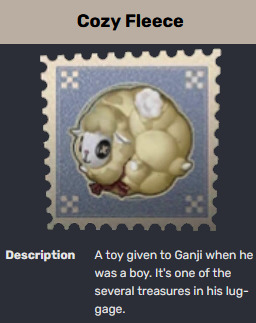
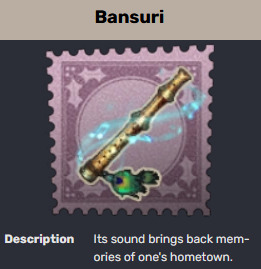
As for the medical records, it says that the patient is suffering “severe homesickness” and displays “impulsive behavior during times of extreme depression or anxiety”. This means that Ganji’s “mania” is caused by his “severe homesickness” in moments when he’s suffering from “extreme depression or anxiety”. That could mean, with Ganji already being homesick for years before the day the fire started, Ganji’s “last straw” when he received bad news about his hometown now makes sense why the fire likely started then. That “bad news” triggered his anxiety and severe homesickness, depressed him when he realized he was stuck at this manor with no quick way home, before then making him impulsive and “manic” in his desire to go home as soon as possible. Whether or not it was on purpose or an accident, it is possible one of his “impulses” resulted in the fire starting, or a confrontation that triggered his irritation causes it to accidentally begin. Maybe a bit of sanity returned to him afterwards, and that could be when he rescued the boy as we see him with the boy during the fire in Ganji’s trailer. But for now, information is scant on the specifics of this event.
Potentially after escaping detainment could be when we see him living by himself like in his other backstories. It’s possible he was in hiding from those that had captured him. We don’t know for sure whether he returned to them for his treasure (it’s possible with how important his note from his mom likely was). We know from Ganji’s backstory that it says he “lived in a cold room with little furniture for years” and “seldom stepped outside during the year”. He had no friends, always looked solemn, and people found it “difficult to get to know him”. Ganji is described as “peculiar and lonely”, and someone his neighbors “loved to gossip about”.
His backstory mentions “random loud noises coming from his room”, which could tie to the behavior he displayed at night in the detention center, when he’d hit his head against a wall.
Regarding Ganji hiding in his room all the time, this connects back to his deduction 9, the diagnosis that suggested “locking all windows and doors and staying at home alone”.
The part about “avoid looking at fire” implies, whether or not he did it and whether it was on purpose or accident, it implies he’d been deeply affected by the fire that burned down the manor. Maybe because of all the feelings (and irritation) he had from how long he spent there, being mistreated and never being allowed to train. Maybe because of the boy he’d formed a relationship too and how this fire took away his home and family, just like Ganji was without his home and family. Maybe any conflict he had if he was somewhat responsible, whether accidentally or on purpose, as his trailer does mention wanting those “gentlemen to repent for their sins” but also because this was a place he’d had such high hopes for regarding his future and now it’s turning to ashes, as well as was a place he’d suffered alone, away from his family, for a long time, but more conflict because Ganji was deep down still a “kind” person (and maybe regretted not saving more people, or regretted if he had a fit of anger and its consequences that day that causes all these events). Just another boy, like the son of the owner of the Queen’s Guard crying at the sight of his home on fire, that was crying out for his family and home as it was threatened or attacked but Ganji unable to do anything about it.
The backstory continues by saying he kept his appearance “hidden” whenever he went out, which could relate to if he was in hiding from the people who’ve been trying to capture him in his letters, or to the mistreatment he potentially receives if people knew where he was from, or to hide the scars on his face from people if he knew how they’d react upon seeing it (as they did describe his face as “horrifying”). It also fits with how his trailer said he needed a “new identity”.
Despite how they treated him, Ganji was said to give “softly spoken words of appreciation to the neighbors’ trivial kindness”, which seems to connect to Ganji’s original personality (as he was described as kind, friendly, and mild-mannered before he came to Britain).
Others debated the reason for Ganji’s behavior, suggesting “regret” (tied to the fire that ended his training with the Royal Team, as other people wouldn’t know the full truth about his feelings towards the Royal Team) or “cautiousness” (from living in a foreign country). Unfortunately for Ganji, everyone decided that Ganji had “a lot of secrets” and “might bring trouble to the town and decided to stay away from him”.
The last thing we hear about Ganji is he still dreamt of returning home, and eventually received an invitation from the manor, offering a “huge reward”, enough for Ganji to use to go home, and he “decided to take the risk”.
Side note regarding Duke Elgin.
I couldn’t find any “Duke” Elgin, but I did find an “Earl” of Elgin. The 9th Earl of Elgin, Victor Bruce, was the Viceroy of India.
I don’t think this is the exact same “Duke Elgin” but it could be a basis for the character (for Netease when designing this).
These were individuals appointed by the British monarch. They represented the British government in India and exercised authority over British India on behalf of the British crown. Victor Bruce served as Viceroy during 1894-1899m which was a particularly troubled period in Indi’s history, and his tenure was not seen as a successful one. During his administration, there was economic and social unrest, a famine, bubonic plague, and the Tirah campaign (Afridi Frontier Rising). This campaign took place in Northwest India and involved the British seeking to restore control over the area after an uprising occurred (with 1 of the challenges they faced being the mountainous terrain).
I don’t think this is exactly where Ganji is from, but this event, as well as all the other issues occurring at the time, could relate to or be a sort of basis (to Netease) for whatever did actually happen to Ganji’s hometown.
Apparently the “bansuri” is a flute connected to north Indian music (with the venu being connected to the south), which could mean (with how the Tirah Campaign happened in the Northwest) Ganji could be from somewhere in the North part of India.
#idv#identity v#ganji gupta#batter#idv ganji#identity v ganji#idv batter#identity v batter#sirenjose analyses and theories
80 notes
·
View notes
Text
On this day in history -- August 15th, 1947 India became independent from Great Britain. 🇮🇳
Pakistan's Independence Day was yesterday! (August 14th, 1947). 🇵🇰
After 200 years of English violence and colonial interference (starting around the late 18th century) and 50+ years of outright English colonialism on the Indian Subcontinent, India (and Pakistan) were free from England.






Indian Independence Movement.
Sepoy Mutiny of 1857.
Rani of Jhansi.
Meera bai.
#on this day in history#history#brown history#1940s#desi tag#desiblr#desi tumblr#south asian#anti imperialism#anti colonialism#india#pakistan
17 notes
·
View notes
Text
In February 2024, creature enthusiasts and popular media outlets celebrated what has been described as the 200-year anniversary of the formal naming of the "first" dinosaur, Megalosaurus.
There are political implications of Megalosaurus and the creature's presentation to the public.
In 1824, the creature was named (Megalosaurus bucklandii, for Buckland, whose work had also helped popularize knowledge of the "Ice Ages"). In 1842, the creature was used as a reference when Owen first formally coined the term "Dinosauria". And in 1854, models of Megalosaurus and Iguanodon were famously displayed in exhibition at the Crystal Palace in London. (The Crystal Palace was regarded as a sort of central focal point to celebrate the power of the Empire by displaying industrial technology and environmental and cultural "riches" acquired from the colonies. It was built to house the spectacle of the "Great Exhibition" in 1851, attended by millions.)
The fame of Megalosaurus and the popularization of dinosaurs coincided at a time when Europe was contemplating new revelations and understandings of geological "deep time" and the vast scale of the distant past, learning that both humans and the planet were much older than previously known, which influenced narrativizing and historicity. (Is time linear, progressing until the Empire is at this current pinnacle, implying justified dominance over other more "primitive" people? Will Britain fall like Rome? What are the limits of the Empire in the face of vast time scales and environmental forces?) The formal disciplines of geology, paleontology, anthropology, and other sciences were being professionalized and institutionalized at this time (as Britain cemented global power, surveyed and catalogued ecosystems for administration, and interacted with perceived "primitive" peoples of India, Africa, and Australia; the mutiny against British rule in India would happen in 1857). Simultaneously, media periodicals and printed texts were becoming widely available to popular audiences. For Victorian-era Britain, stories and press reflected this anxiety about extinction, the intimidating scale of time, interaction with people of the colonies, and encounters with "beasts" and "monsters" at both the spatial and temporal edges of Empire.
---
Some stuff:
"Shaping the beast: the nineteenth-century poetics of palaeontology" (Laurence Talairach-Vielmas in European Journal of English Studies, 2013).
Fairy Tales, Natural History and Victorian Culture (Laurence Talairach-Vielmas, 2014).
"Literary Megatheriums and Loose Baggy Monsters: Paleontology and the Victorian Novel" (Gowan Dawson in Victorian Studies, 2011).
Bursting the Limits of Time: The Reconstruction of Geohistory in the Age of Revolution (Martin J.S. Rudwick, 2010).
Assembling the Dinosaur: Fossil Hunters, Tycoons, and the Making of a Spectacle (Lukas Rieppel, 2019).
Inscriptions of Nature: Geology and the Naturalization of Antiquity (Pratik Chakrabarti, 2020).
"Making Historicity: Paleontology and the Proximity of the Past in Germany, 1775-1825" (Patrick Anthony in Journal of the History of Ideas, 2021).
'"A Dim World, Where Monsters Dwell": The Spatial Time of the Sydenham Crystal Palace Dinosaur Park' (Nancy Rose Marshall in Victorian Studies, 2007).
Articulating Dinosaurs: A Political Anthropology (Brian Noble, 2016).
The Earth on Show: Fossils and the Poetics of Popular Science, 1802-1856 (Ralph O'Connor, 2007).
"Victorian Saurians: The Linguistic Prehistory of the Modern Dinosaur" (O'Connor in Journal of Victorian Culture, 2012).
"Hyena-Hunting and Byron-Bashing in the Old North: William Buckland, Geological Verse and the Radical Threat" (O'Connor in Uncommon Contexts: Encounters between Science and Literature, 1800-1914, 2013).
And some excerpts:
---
When the Crystal Palace at Sydenham opened in 1854, the extinct animal models and geological strata exhibited in its park grounds offered Victorians access to a reconstructed past - modelled there for the first time - and drastically transformed how they understood and engaged with the history of the Earth. The geological section, developed by British naturalists and modelled after and with local resources was, like the rest of the Crystal Palace, governed by a historical perspective meant to communicate the glory of Victorian Britain. The guidebook authored by Richard Owen, Geology and Inhabitants of the Ancient World, illustrates how Victorian naturalists placed nature in the service of the nation - even if those elements of nature, like the Iguanodon or the Megalosaurus, lived and died long before such human categories were established. The geological section of the Crystal Palace at Sydenham, which educated the public about the past while celebrating the scale and might of modernity, was a discursive site of exchange between past and present, but one that favoured the human present by intimating that deep time had been domesticated, corralled and commoditised by the nation’s naturalists.
Text by: Alison Laurence. "A discourse with deep time: the extinct animals of Crystal Palace Park as heritage artefacts". Science Museum Group Journal (Spring 2019). Published 1 May 2019. [All text from the article's abstract.]
---
[There was a] fundamental European 'time revolution' of the nineteenth century [...]. In the late 1850s and 1860s, Europeans are said to have experienced ‘the bottom falling out of history’, when geologists confirmed that humanity had existed for far, far longer than the approximately 6,000 years previously believed to represent the entire history [...]. ‘[S]ecular time’ became for many ‘just time, period’: the ‘empty time’ of Walter Benjamin. […] The European discovery of ‘deep time’ hastened this shift. [....] Historicism views the past as developments, trends, eras and epochs. [...] Victorians were intensely aware of ‘historical time’, experiencing themselves as inhabiting a new age of civilization. They were obsessed with history and its apparent power to explain the present […].
Text by: Laura Rademaker. “60,000 Years is not forever: ‘time revolutions’ and Indigenous pasts.” Postcolonial Studies. September 2021.
---
At the time when geology and paleontology emerged as new scientific disciplines, [...] [g]oing back to the 1802 exhibition of the first Mastodon exhibited in London’s Pall Mall, […] showmanship ruled geology and ensured its popularity and public appeal [...]. Throughout the Victorian period, [...] geology was as much - if not more - sensational than the popular romances and sensation novels of the time [...]. [T]he "rhetoric of spectacular display" (26) before the 1830s [was] developed by geological writers (James Parkinson, John Playfair, William Buckland, Gideon Mantell, Robert Blakewell), "borrowing techniques from [...] commercial exhibition" [...]. The discovery of Kirkdale Cave in December 1821 where fossils of [extinct] hyena bones were discovered along with other species (elephant, mouse, hippopotamus) led Buckland to posit that the exotic animals [...] had lived in England [...]. Thus, the year 1822 was significant as Buckland’s hyena den theory gave a glimpse of the world before the Flood. [...] [G]eology became a market in its own right, in particular with the explosion of cheaper forms of printed science [...] in cheap miscellanies and fictional miscellanies, with geological romances [...] [...] or [fantastical] tropes pervading [...], "leading to a considerable degree of conservatism in the imagery of the ancient earth" (196). By 1846 the geological romances were often reminiscent of the narrative strategies found in Arabian Nights [...].
Text by: Laurence Talairach-Vielmas. A book review published as: “Ralph O’Connor, The Earth on Show: Fossils and the Poetics of Popular Science, 1802 - 1856.” Review published by journal Miranda. Online since July 2010.
---
Dinosaurs, then, are malleable beasts. [...] [T]he constant reshaping of these popular animals has also been driven by cultural and political trends. [...] One of Britain’s first palaeontologists, Richard Owen, coined the term “Dinosauria” in 1842. The Victorians were relatively familiar with reptile fossils [...] [b]ut Owen's coinage brought a group of the most mysterious discoveries under one umbrella. [...] When attempting to rise to the top of British science, it helped to have the media on your side. Owen’s friendship with both Charles Dickens and William Makepeace Thackeray led to fond name-dropping by both novelists. Dickens’s Bleak House famously begins by imagining a Megalosaurus, one of Owen’s original dinosaurs. Both novelists even compared their own writing process to Owen’s palaeontological techniques. In the scientific community, Owen’s dinosaur research was first [criticized] by his [...] rival, Gideon Mantell, a surgeon and the describer of the Iguanodon. [...] Naming dinosaurs was a powerful way of claiming ownership [...]. Owen [...] knew the power of the press [...]. [M]useum exhibits [often] [...] flattered white patrons [...] by placing them at the apex of modernity. [...] Owen would not have been surprised to learn that the reconstruction of dinosaur bones is still an act that is entangled in politics.
Text by: Richard Fallon. "Our image of dinosaurs was shaped by Victorian popularity contests". The Conversation. 31 January 2020.
#abolition#ecology#paleo#imperial dinosaurs#victorian and edwardian popular culture#opacity and fugitivity
35 notes
·
View notes
Text

Fancy a trip? Then welcome to door no. 19, where you can set sail on the SS Great Britain

SS Great Britain
Her history here:
When Brunel’s ocean liner, was built in the nineteenth century the SS GREAT BRITAIN was a bold attempt by a British company to break the American monopoly of the trans-Atlantic passenger trade. Launched by Prince Albert on 19 July 1843, she was the largest and most technically innovative ship of her day, because she was the first iron hulled, screw propelled ship. Her first voyage to America began on 26 July 1845, and she covered 3,100 miles in 14 days and 21 hours.
On the return journey, because of the loss of propeller blades, she used sail only, but still completed the voyage to Liverpool in 20 days. In 1846, however, on her fifth voyage, she ran aground in Dundrum Bay, County Down. It was not until August of the following year that she was refloated and towed back to Liverpool, and, in 1850, was sold to Gibbs, Bright & Co. for service to Australia. She was significantly altered at this time.
In 1854, she was refitted as a troopship for the Crimean War and again in 1857 she carried reinforcements to Bombay to deal with the Indian Mutiny. Returning to the Australian run, she carried the first touring English cricket side. In 1876, she was put up for sale at Birkenhead, but not bought until 1882. Her new owners, Anthony Gibbs, Sons & Co. converted her entirely to a sailing vessel for transporting coal to San Francisco and returning with wheat. After two such voyages, in 1886, she was dismasted by a hurricane off Cape Horn and she put into the Falkland Islands. As repairs were considered too expensive, she became a hulk for storing coal and wool. On April 14 1937, she was towed a few miles out of Port Stanley to shallow water in Sparrow Cove; holes were punched in her bottom and she settled on the seabed. The organisation required to co-ordinate the task of recovery came into being in 1968, led by Dr Ewan Corlett. In April 1970, she was refloated, returning to her original dock Bristol in July that year where she underwent a major conservation programme.
In 2006, an appeal was launched to help restore the masts of the SS GREAT BRITAIN. Two of the masts and part of a third needed to be urgently replaced as they had become badly degraded. The vessel was successful in winning the prestigious Gulbenkian Prize as UK Museum of the Year 2006, which brought with it £100,000 in prize money. This was put towards the costs of the masts. The ship also won two awards at the Museums and Heritage Awards for Excellence 2006 conference in the restoration and conservation category as well as permanent exhibition. The project was also awarded the Civic Trust Award 2006 for accessibility. These Awards follow the relaunch of GREAT BRITAIN after work costing £11.3 million to transform her into a major visitor attraction and museum, as well as to preserve the vessel for future generations. The ship saw more than 160,000 visitors between July 2005 and September 2006.
#naval history#naval artifacts#ss great britain#ocean liner#brunel#1843#age of sail#advent calendar#day 19
98 notes
·
View notes
Text
The Sign of Four: The Strange Story of Jonathan Small (Part Two of Two)
CW for graphic discussion of war crimes.
Sepoy was a term, derived from the Persian sepāhī meaning "infantry soldier", that was used to refer to Indian soldiers, generally with muskets, in the Mughal Empire's armed forces and also Maratha Army. Europeans then used the term to refer to Indians in their colonial forces. One of the names of the rebellion was the Sepoy Mutiny.
Today, Sepoy is the equivalent of "Private" in the Indian and Pakistani armies.
Cawnpore, now Kanpur, was the scene of a siege of East India Company forces and associated civilians in 1857. The EIC surrendered in return for safe passage offered by Nana Sahib, leader of the rebellion on the area. Then, for unclear reason, the departing men, women and children were attacked - no definitive evidence that Sahib authorised this has been found. All the men were killed, with the surviving women and children taken to a villa called Bibighar. 22 days later, although some sepoys refused the order, they were nearly all massacred, with their naked bodies thrown down a well. The British arrived the next day to recapture the city and then carried out horrific summary justice against any rebels who could not prove their innocence. Space precludes me from covering it in depth.
Historically, treason, like the rajah has basically done, would result in Parliament passing an act of attainder, basically seizing your entire personal property plust titles without any judicial process. Not sure what the East India Company's rules were on that. The US constitution specifically bans Congress and the states from passing any bills of attainder.
I'd need to enquire about this, but EIC sepoys apparently swore loyalty to the salt they had eaten, hence the term "true to their salt".
A postern is a side entrance in a city or castle wall, usually concealed so it can be used for stealthy entrances and exits; it could also be used during a siege for the defenders to make an attack on their besiegers. The foundations of one from the London Wall can be seen next to the Tower of London.
A firelock is a musket where the powder is ignited by sparks, either from a lit match or friction from a piece of flint.
The wet season in India lasts from around June to September, when 80% of the annual rainfall occurs. This is vital for Indian agriculture and delays in it occuring can cause real problems. In any event, you get near-daily thunderstorms and torrential downpours. This can result in roads getting badly damaged and flooding in places with poor drainage. Bollywood is a particular fan of romantic scenes involving monsoons, because they allow for sexy wet people.
I believe a mound-heap is another term for midden, an outside dump for all sorts of domestic waste, ranging from broken pottery to animal bones to human waste. Archaelogists are particular fans of them as they provide evidence of past human habitation of a sight. Poor people in Victorian London would search through them for any items of value.
The British last executed someone by firing squad in 1941 when Josef Jakobs, a German NCO convicted of spying was shot at the Tower of London. Two American soldiers would be shot at Shepton Mallet in 1944 for murdering fellow soldiers.
Before the introduction of compulsory recording of police interviews in 1992, records of interviews were generally made from notes taken during the interview or even the officers' memory, with associated problems. The interviewee would then be asked to sign the official record, something frequently refused, especially if it looked like they were signing a confession. It was also pretty common for police to engage in "verballing" i.e. falsifying the record to make it appear there had been a confession.
"The first water" means the diamonds were of the highest quality, basically having the appearence of clear water.
Commutations of death sentences were in fact quite common, especially for lower-level offences. If you see "death recorded" in a trial transcript, it means that the judge had to pass the death sentence, but clearly intended for there to be a pardon or commutation. This often occurred for sodomy convictions.
Mount Harriet is a 383-metre high hill today called Mount Manipur.
A military officer who went bankrupt, especially for gambling debts, was going to lose his commission at best. Bankruptcy is still going to be a real concern in any armed forces today, especially for your security clearance.
It is around 375 miles as the metaphorical crow flies (crows are not sea birds) to Myanmar, then Burma and a British colony. The only place you could reasonably reach from Port Blair that was not under some form of British control was Siam (now Thailand), which remained independent throughout the imperial era, except when Japan invaded it in 1941.
Yawl has several definitions, including a sail layout commonly used for racing yachts in this period.
The belief that the Andaman indigenous people were cannibals appears to have come from the account of Marco Polo.
Hundreds of people tried to escape from the Andaman penal colony, including 288 of the initial 1858 arrivals, a third of those who survived the original journey. However, the thick jungle and "the murderous attacks of the savage aborigines", as military doctor and original governor James Pattison Walker put, led to 81 survivors limping back to Port Blair. They asked for mercy and medicine. Walker had them and seven other recaptured prisoners all hanged the same day. Many who got off the island likely drowned.
Two prisoners in 1872 managed to get all the way to London, after convincing a British vessel they were shipwrecked fishermen. However, the manager of the Strangers Home for Asiatics in London where they ended up got suspicious, took photographs of them and sent them around the empire. That led to their recapture.
The calabash fruit, also known as the gourd, can be turned into bowls or other containers. Gourd is also a slang term for "mind".
The pilgrims sailing from Singapore to Jiddah (or more usually Jeddah) would likely have been heading for Mecca to take part in the hajj. This a pilgrimage considered one of the five pillars of Islam and mandatory at least once in a lifetime for any Muslim with the physical and financial ability to do it. Modern travel has made this a lot less hazardous - past pilgrims faced dangers including piracy, with even some of the Caribbean pirates sailing around Africa to attack ships for the treasures that might be going with them. At least until they reach Mecca, when everyone dresses in the same simple clothing.
At the time of this story, Jeddah, Mecca and Medina were in the Vilayet of the Hejaz, a province of the Ottoman Empire.
The 1445/2024 Hajj, ongoing as I post this, has attracted 1.833 million pilgrims. These numbers have caused stampedes and spread of disease; this year has also seen deaths due to heat stroke in 48 degrees Celsius temperatures. The Saudi authorities have taken various measures to improve safety, including registration requirements and improvements to the site layout provide escape routes.
From Jeddah (and other places in the region), pilgrims would historically travel to Mecca in large camel caravans with military escort as protection against bandit attacks. Today, Jeddah is home to the biggest airport in Saudi Arabia with a dedicated and distinctive terminal for the pilgrimage, as the vast majority of pilgrims arrive via air today. From there, modern roads and a new high-speed railway provide easy access to the holy sites.
Performing in "freak shows" was one of the few ways that severely disabled people could earn a living in these period - it was often that, begging or the workhouse; Joseph Merrick could not hold down any other employment because of his appearance. People with microcephaly i.e. a smaller than usual head were passed off as "missing links". However, by 1888, public opinion was turning against such acts.
#letters from watson#sherlock holmes#history#factoids#the sign of four#sign#east india company#india
16 notes
·
View notes
Text
Letters from Watson: The Crooked Man
Part 1: The fun bits
Given that we know Holmes had supper at Waterloo, and that Watson lives conveniently near Paddington station, it appears that Holmes has come from the train and is either too tired to find a cab (or make the 25ish minute walk) to Baker Street at this late hour, or really wanted to see Watson.
The modern train to Aldershot from Waterloo Station takes roughly 2.5 hours. If the Victorian trains are comparable, Holmes and Watson will be getting into town at approximately 1:30 to 2 pm.
Edit: been told it's closer to an hour, Holmes could easily take Watson to lunch.
If you've ever wondered how a Victorian doctor takes a sick day, Watson appears to trade his practice, and perhaps also his rounds of house calls with a colleague. When it comes to patients arriving at Watson's home office, it may be as simple as instructing a servant to redirect people to Jackson's practice, which is hopefully not too far off. Something they probably did already with emergencies if Watson happened to be out on a house call.
Sorry but The Royal Munsters sounds like a British knock-off of The Munsters. A sitcom about Frankenstein's Monster, Vampires, and a few stray Dukes.
It was actually a Fusillier (infantry with muskets) regiment with ties to the British East India Company, officially formed in 1881
Crimea: Presumably the Crimean War (1853 to 1856) between the then Ottoman Empire (currently Turkey, Palestine, and parts of other nearby nations) allied with France, England, and Sardinia, against the Russian empire. From my wikipediaing, it appears to have eventually developed into a proxy war between Russia and the Western Europeans with the Ottomans backing the alliance of western nations to try and get the Russians off their lawn.
The absolutely horrifying conditions and death toll lead to a demand in England to professionalize medicine, including nursing. This is where Florence Nightengale became famous for introducing the concept of sanitation to the british army. (Indirectly, as a survivor of a british army hospital after surgery and chronic infectious illness, Watson probably owes her reforms his life.)
The Munsters could be in Crimea in the 1850's despite not being part of the British Army until 1881, because their progenitor regiment was part of the British East India Company for over 100 years.
The "Mutiny" would be The Indian Rebellion of 1857 / First (Indian) War of Independence, another complicated colonial bloodbath.
Yes, this case is another variation on "absolutely do not go to any of the colonies, you will either die there or commit horrible crimes there and then die messily in England as a result of them later."
About the expressions of the dead. In real life, expressions do not freeze after death. Muscles will relax without any nerve input to tell them to contract long before rigor mortis sets in. However, some medical conditions will cause contortions of the face muscles during death, and these would have been apparent to the people first on the scene at Barclay's death.
13 notes
·
View notes
Text
Mutinies Aboard Whaleships
Hello! Here’s a long thing I spent my morning on about mutiny.

An 1840s illustration of an overturned whaleboat, with a skull and a crossed harpoon and lance over it.
With the often terrible conditions on board whaleships, one might expect mutinies to have been a common occurrence, but ones that led to bloodshed and taking command of a ship were actually very rare. Whalers who were unhappy tended to just desert at the next port. Others made their demands sometimes in the form of damaging the ship, or more commonly through work stoppages (which I wrote about more at length here). When it came to work stoppages, the Captain often acquiesced, as the unique pay structure of whaling meant that everyone was equally beholden to the success of the voyage. It was easier and more productive to hear out and try to address the demands of the crew than to resist and have a poor voyage.
There were however, a few notable violent mutinies that found themselves plastered over the newspapers. The Globe of Nantucket, January 1824, and the Junior of New Bedford, December 1857.
Alexander Starbuck, in his 1870s record of the history of the industry made a note alongside the Globe’s doomed 1822 voyage: ‘On this voyage and on this ship occurred the most horrible mutiny that is recounted in the annals of the whale fishery from any port or nation.’
Content warnings for Violence & Death under the readmore.
The Globe mutiny was unique and particularly haunting in that it wasn’t a result of boiling tension or displeasure on a difficult voyage. The instigator, a 22 year old boatsteerer named Samuel Comstock, specifically signed on the ill-fated whaler with premeditated slaughter in mind. His aim was to eventually kill all the officers, take the ship by force, sail it to an island in the South Pacific, and create his own Kingdom on said island over which he would rule (the last bit, as one might expect, did not work out for him).
In January 1824 near Fanning Island, Samuel’s 15 year old brother George was at the wheel, and made move to shake a rattle to relieve himself of his watch. He was harshly stopped by Samuel, who was plotting to carry out his plans that night and didn’t want anyone awakened:
“I had scarcely begun to shake it when Comstock came to me and said if I made the least damned bit of noise he’d send me to hell. This was very sudden and alarming to me his suspecting nothing I began to rattle but was thus suddenly checked by a brother in flesh but not in heart for if he had been he would have put away this wicked design thinking it would ruin me forever for little did he think I would ever get home to tell the fatal news.”
Samuel was accompanied by a handful of other mutineers, but it was he alone who did the killing, murdering the captain and officers by axe, by boarding knife (a three foot double-edged blade used for cutting blubber), by pistol, by drowning. In the midst of this bloodshed he returned to his brother George.
“After killing the mate Comstock came up to light a lamp at the binnacle. I then spoke to him and asked him if he was going to hurt Smith, the other boatsteerer he said yes he should kill him and asked me where he was I told him I had not seen him (although he had been aft talking with me) for fear if I told the truth he would kill him or go in pursuit of him. he perceiving me shed tears asked me what I was crying about I informed him that I was afraid they were going to hurt me he told me he would if I talked that way this rather silenced me from fear of myself.”
Rather than killing the boatsteerer Smith, Samuel, after his particularly brutal display of violence towards the commanding officers, effectively intimidated the rest of the crew into serving under him. Boarding knife in hand, he proclaimed ‘I am the bloody man and I have the bloody hand’.

A 19th c. whaler’s boarding knife.
George was ordered to be steward, and the rest of the crew was first commanded to clean the gore from the cabins. They operated under a set of laws Comstock put forth, as they set course for the Marshall Islands to complete his designs:
“That if any one saw a sail and did not report it immediately, he should be put to death! If any one refused to fight a ship he should be put to death; and the manner of their death, this—They shall be bound hand and foot and boiled in the try pots, of boiling oil!” Every man was made to seal and sign this instrument, the seals of the mutineers being black, and the remainder, blue and white.”
Tensions grew on the ship. One mutineer was hanged on board when Comstock suspected him of wanting to take command of the ship. And the other initial men who joined up with him (as well as, of course, the others who had played no part) also suspected that when they arrived to Comstock’s destination of Mili Atoll, he was going to destroy the ship and kill everyone who came with him. They landed on the atoll on February 14th, and three days later the other mutineers shot and killed Comstock. They sent a party of six of the crew (George among them, and led by the boatsteerer Smith) to secure the Globe lying at anchor, not anticipating those six might strand the mutineers on the island. Hastily, as soon as they got aboard the group of men cut the anchor chain and sailed away for help, eventually reaching Chile.
The surviving mutineers and two young lads, Cyrus Hussey and William Lay, were all who remained on the island. Tension also existed between the mutineers and the islanders on Mili Atoll, who were suddenly met with a group of castaways trying to aggressively impose their control over them. Ultimately, the mutineers were killed by the islanders after they tried to intimidate them. Cyrus Hussey and William Lay were spared. They were mostly kept separate from each other in two different communities on the island, where they lived mostly-peaceably with the islanders until they were eventually retrieved on November 25th by a naval schooner, the USS Dolphin, that was sent to rescue them.

“The Death of Samuel Comstock”. An 1840s illustration of Samuel Comstock falling back in the sand on an island, a cutlass in hand and a gunshot wound it his chest. From ‘The Life of Samuel Comstock, the Terrible Whaleman”
—
The other notable mutiny was that of the Junior, out of New Bedford at the close of 1857. This mutiny was more a result of ill treatment on board reaching a breaking point. The voyage was plagued with the usual bad luck, an inexperienced first-time captain, rotten food, and abusive officers. One man, a 24 year old boatsteerer named Cyrus Plumer, had a reputation of being rash and hot-headed. Prior to his signing on the Junior, he had been on another whaling vessel three years before where at one point he approached a fellow boatsteerer trying to get his support in staging mutiny to overthrow the captain and take the ship but, not finding it, deserted.
On the Junior, he found more support. On December 25th, 1857 Plumer encouraged the men (many of whom had had a bit too much to drink in light of the holiday) to take the ship that evening. The mutineers killed the captain and third mate, similarly as above, with a whaling gun, hatchet, a boarding knife, a blubber spade. The first and second mate were injured, with one taken prisoner by the mutineers and the other managing to stow himself in the lower hold for 5 days with a pistol with three shots, little water, and no food. A confession composed by the main mutineers in the ship’s log after the deed speaks to what happened after:
“This is to certify that we, Cyrus Plumer, John Hall, Richard Cartha, Cornelius Burns, and William Herbert, did, on the the night of the 25th December last, take the ship Junior, and that all others in the ship are quite innocent of the deed. The captain and third mate were killed, and the second mate was wounded and taken prisoner at the time. The mate was wounded in the shoulder with balls from a whaling gun, and at the time we fired we set his bed on fire, and he was obliged, for fear of suffocation, to take to the lower hold, where he remained until Wednesday afternoon. We could not find him before, but we undertook a strict search and found him there. We promised him his life, and the ship, if he would come out and surrender without any trouble, and so he came out. Since he has been in the ship he has been a good officer, and has kept his place. We agreed to leave him the greater part of the crew, and we have put him under oath not to attempt to follow us, but to go straight away and not molest us. We shall watch around here for some (time), and if he attempts to follow us or stay around here, we shall come on board and sink the ship. If we had not found Mr. Nelson the ship would have been lost. We have taken two boats and ten men, and everything that We wanted. We did not put Mr. Nelson in irons on account of his being wounded, but we kept a strict watch over him all the time. We particularly wish to say that all others in the ship but we five aforesaid men are quite innocent of any part in the affair.
Ultimately the mate did not keep his oath, making course for Sydney, Australia once the mutineers were out of sight in their boat. He alerted the shipowners of the situation, and word went round the globe. The mutineers were captured in Melbourne, February 1858, and brought to trial back in New Bedford. They were transported aboard the Junior itself, fitted out with prison cells to hold them. The case went all the way up to the Supreme Court. In April 1859 Plumer was found guilty of murder, and Cartha, Herbert, and Charles Stanley of manslaughter. The others were pardoned.
Plumer objected to his death sentence in a statement to the courts, saying first that he was not the man who killed the captain. That he indeed fired a shot at him but missed, and another crew member, Charles Fifield later killed the Captain with a hatchet.
“[he] stated to another person that I ‘missed the captain but that he did not miss him’ and boastingly showed the blood on his guernsey frock saying ‘it was the captain’s blood, and that he was the butcher’.
Plumer said that in the trial this man ‘wickedly sworn his own crime on my head’. He also stated that he didn’t take life but preserve it, in sparing the other two wounded officers. Officers who he ultimately held guilty for the mutiny in the first place through their complicity:
“The real culprit—the most guilty person in my judgement—the one who’s contriving brain and intiguing heart were the instigating cause of the conspiracy and mutiny on board the Junior”
He found no sympathy and was sentenced to hang, but his sentence was commuted to life in prison by president Buchanan, and then he was later fully pardoned 15 years later by president Grant.

A daguerrotype of four of the mutineers after their capture in 1858: Plumer, Rike, Cartha, and Stanley, sitting in a line against the wall with serious expressions, the first three dressed in dark suits, the last in just a shirt.
—
These two mutinies garnered particular interest because they were so rare. Again because if people were unhappy they tended to just…ditch, rather than shed blood. And also partly because some captains also reacted with their own violence at the prospect of mutiny, and found themselves pardoned by their peers for it. An example of this can be found in an article in the New Bedford Mercury, Dec 18, 1849. I’m curious about captain Issac Hussey’s relation to Cyrus Hussey, if there be one, and if that experience informed his zero tolerance.
“In June last, while cruising in the vicinity of the King’s Mill Group of Islands, the crew of the Planter, led on by a few desperate fellows, refused duty, alleging as a cause that the ship had cruised long enough, and should go into port. Capt. Hussey refused to comply with the demands of the crew, whereupon they armed themselves with knives, handspikes, boarding knives &c. and threatened the lives of the captain and officers unless their demands were immediately complied with. Capt. H. endeavored to reason with them, and upon going forward to do so was met at the try-works and forced back.
After several ineffectual attempts to induce the crew to return to their duty, and finding that they had determined to force the captain to return to port or take possession of the ship, Capt. H. ordered the ship’s muskets to be brought upon deck and loaded with ball cartridges. He then addressed his crew, stating his determination to maintain his authority on board if need be at the cost of life, and gave them a half hour to consider the matter and make up their minds whether they would return to duty. At the expiration of the time, he again addressed them, and finding that they still persisted in their mutinous intentions, he very coolly and resolutely informed them that he had determined upon the course for him to pursue—that he was a good shot, and that the first man who, on being commanded by him, refused to obey, would be shot dead upon the spot. He then took up a tried musket and calling one of the ringleaders by name, ordered him to come aft; the only answer to which was defiance. Capt. H. then levelled his gun and fired. The ball entered the temple of the mutineer and passed out the opposite side of the head, and he fell dead upon the deck. The same course was then pursued with another of the ringleaders, who with the remainder of the crew preferred returning to their duty to being shot at—and the ship continued on her cruise.
The peril to which the vessel and crew were exposed by the conduct of the mutineers will doubtless furnish to the minds of all a sufficient justification for the extreme measures to which he was compelled to resort, and afford to him ample vindication by the laws of his country.”
It was a bloody world all around—oft times whales, sometimes men.
195 notes
·
View notes
Text
Khukurī (kukri) types and accessories
[a compilation of articles by Peter Dekker, Mandarin Mansion Antiques, 2020; text and photographs licensed under a Creative Commons Attribution 4.0 International License]
The Khukurī (खुकुरी )

A Nepalese khukurī, 1850s
The khukurī (खुकुरी) is the traditional utility and fighting knife of Nepal. It is strongly associated with the Ghurkas, a Nepalese soldier class. Khukurī are characterized by a forward curving blade that widens considerably before forming a fairly sharp point.
The knife goes by many names, but the best-established names and their romanization are khukurī (खुकुरी ) and the simpler khukri (खुक्रि), both appear in comparative and etymological dictionary of the Nepali language of 1931. [1] The simplified word kukri is in common use today, mainly among English speaking collectors.
18th century
The first few reliable images we get of early khukurī are two 18th century pieces, exhibiting striking similarities even though one is in a Chinese collection and the other was illustrated by an English expedition party.
First, an 18th-century khukurī that appears in the Palace Museum collection in Beijing.1 It was probably captured in battle or presented during the signing of a treaty during the Tibet-Ghurka conflicts of 1788-1792.
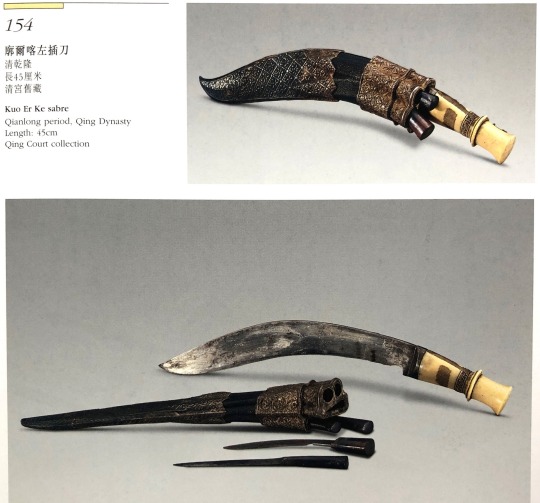
Khukurī in the Palace Museum collection, Beijing.
The relatively narrow handle with minimal flare in the pommel is also seen on Kirkpatrick's depiction of the khukurī, the first such illustration to appear in European sources.
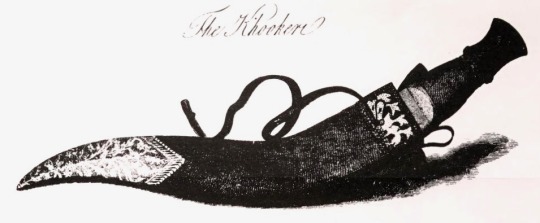
Early illustration of a khukurī. From Colonel Kirkpatrick's 1793 account of Nepal.
Another early piece, most likely the late 18th century, was obtained by Lord Egerton in 1855. It was published in his book Indian and Oriental Arms and Armour and is now in the Victoria & Albert Museum. V&A accession number: 3095(IS).

One of the Egerton khukurī
This piece has some early features like the shallow kauro (notch), and the overall form of hilt and blade. The workmanship looks Indian, and it may have been made by Indian craftsmen.
19th century
Some well known early 19th-century depictions of khukurī are in the Fraser Album. A few of them were actually made, commissioned by William Fraser (1784-1835), a late Mughal era British India civil servant in Delhi.

"Nepali soldiers" from the Fraser Album, published 1819.
Notable features seen on khukurī in these drawings are:
Long hilts with gently flaring pommels
Black enbroidered scabbards with small chape
A recurved shape to the scabbard
Types
Hanshee khukurī (हँसिया खुकुरी)
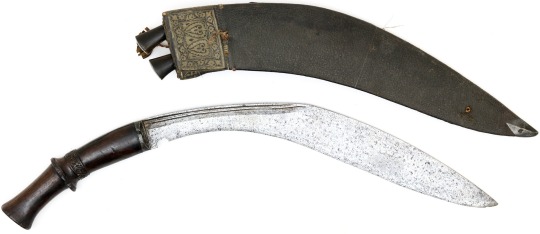
The hanshee khukurī or simply hanshee is an early type of khukurī that is characterized by having a long hilt and a rather long and relatively narrow blade with a strong curve. Other than most types of khukurī which double as fighting and utility knife, the hanshee appears to have been purely used as a weapon.
The word hanshee derives off the Nepali word hamsiyā (हँसिया) meaning "sickle". Another term used is lambendh, which supposedly means "long handle" containing the word lambe (लम्बे) meaning "long" in Nepali.
The hanshee appears to have been most popular in the late 18th and early 19th century and seems to have fallen out of use by the mid 19th century. Khukurī researcher V.K. Kunwor of Ghurka antiques writes about the hanshee: "These Kukri knives were very popular in the unification period of Nepal (1750-1770) and continued to be used in the Anglo-Nepal War 1814-1816 and up till the Indian Mutiny 1857, from whence it declined in popularity." He also writes that one of the defining features is a handle length of at least 13 cm.
Budhunē khukurī (बुधुने खुकुरी)

The fat-bellied budhunē khukri (bottom) compared to a more conventionally proportioned khukri (top)
Budhunē khukurī (बुधुने खुकुरी) is the name of a variation of khukri with a short, broad blade. It is a term that appears in the Comparative and etymological dictionary of the Nepali language of 1931.
Bhojpure subtype: The term Bhojpure turns up in John Powell's unfinished manuscript on the khukurī. Powell notes that it is a term later in use for the earlier budhunē type.
Well known khukurī researcher Viking Kunwor, writing in 2020 adds: "The Bhojpure (from a town (Bhojpur) in the mid hills of eastern Nepal) is one of several styles within the larger Budhume group (a term which is a based on a broad bellied fish spieces). The many tribes can be attributed to these weapons such as Limbus and Rais make only the deeper bladed Bhojpure, the Gurungs, Tamangs and Chhetris make the seerpat and the Newars are the artisans who are responsible for many of the finely carved wooden scabbards, intricate decoration and engraved blades."
Sirupātē khukurī (सिरुपाते खुकुरी)
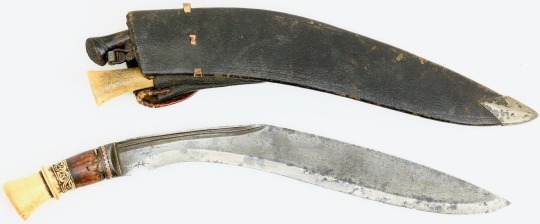
A sirupātē khukurī of the early 1800s.
Sirupātē (सिरुपाते) is a word commonly used to describe a long, slender version of a Nepalese khukurī.
The word sirupātē (सिरुपाते) appears in Ralph Lilley Turner’s A Comparative and Etymological Dictionary of the Nepali Language of 1931 and is described as: "सिरु-पाते siru-pāte,adj. Long and slender like a blade of siru"
Siru (सिरु) is the name of a local plant. Pātē (पाते) means "leaf". Turner gives the meaning for siru (सिरु) as the name of two varieties of grass or reed: (1) Imperata arundinacia (= khar-siru, used for thatching); (2) Imperata arundinacia var. latifolia. (Another possibility may be Hypoxis aurea which is called ban siru (बन सिरु) locally.)
Kothimora khukurī (कोथि मुहुड़ा खुकुरि)
Kothimora khukurī refers to a khukurī in an ornamental scabbard, usually with elaborately worked silver mounts but sometimes found in silver with parcel gilding or entirely golden mounts as well. 1
The term primarily applies to the scabbard, there may be a very mundane khukurī inside, although in some cases they were produced together and both of a higher than usual quality.
The word consits of kothi (कोथि), and muhura (मुहुड़ा). Kothi (कोथि) is the Nepali word for the silver chape on the scabbard of a khukurī. 2
Muhura means “face”. Colonel J.P. Cross states that the full wording would be “kothimora dap bha'eko khukurī”. This would literally translate to "silver chape face scabbard done khukurī", written in Nepali it is कोथिमुहुड़ा दाप् भएको खुकुरी.
John Powell, a pioneer in khukurī studies, distinguished three main types: The "Palace or Court kothimora", "regimental kothimora" and the "box kothimora". He also noted that many do not fall into these set categories, and those can just be referred to as kothimora khukurī.
Palace or Court kothimora: Usually with black leather covered scabbard with gold or silver scabbard mouth and endpieces. Each fitting worked in repousse or engraved, frequently with the National Coat of Arms of Nepal.
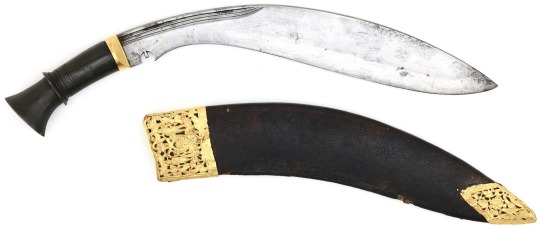
Palace or Court Kothimora khukurī
Regimental kothimora: The most commonly encountered type. These were primarily made for Ghurka soldiers. Powell describes that sometimes these were just regular fighting khukurī that were brought to the metal worker to fit the scabbard with a fancy dress, usually in repousse silver, as an honour permitted to men of valor.
As military weapons, they sometimes come with regimental insignia, but are more often encountered decorated with traditional local elements. Their wooden scabbards can be covered with leather or silk velvet.

A large kothimora khukurī.
According to Powell, in the British Indian army, regimental kothimoras were worn only by the Pipe Major (senior bagpiper) when on parade and senior NCO and ORs of the Officer's Mess. They were also presented to retiring Ghurka officers, or when an officer moved up rank.
Box kothimora: The main defining feature of this type is that the scabbard does not have separate leather or fabric pockets for karda and chakmak, it is all integrated in a single case, often clad in sheets of silver going around the circumference of the scabbard, and with mouthpiece and endpiece much like the regimental kothimora. These seem to have been primarily pieces that were presented to civilians.
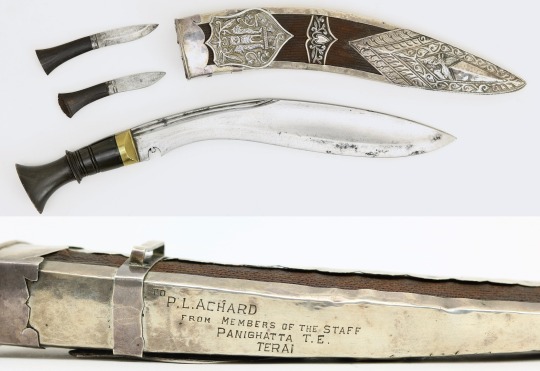
A box kothimora khukurī presented to wildlife conservationalist Peter L. Achard between 1947-1966.
Accessories

a "trousse khukurī" of the first half of the 20th century
Some items are often stored in the khukurī scabbard alongside the main knife.
Karda (कर्द)

Karda (कर्द) is the Nepali word for a small utility knife that was traditionally carried in the scabbard of a khukurī. The term comes from the Persian word kard (کرد), meaning "knife". A typical khukurī carries one, but some carry two of them in their scabbards.
Karda typically follow a similar construction as their parent khukurī, with wood, horn, bone, silver or ivory hilts and a metal bolster. The blades are usually more straight than khukurī.
Cakmak (चक्मक्)

Left: Five cakmak, right: Five karda. Notice the subtle differences at the pommel side and the absence of an edge bevel on the cakmak.
Cakmak (चक्मक्) is the Nepali word for a small knife-shaped fire and sharpening steel that was traditionally carried in the scabbard of a khukurī. [N.B. must be from Ottoman Turkish چاقماق / Turkish çakmak, "firestriker" (and later "lighter") < Common Turkic *čak- (“to strike”)]

The worked pommel ends of cakmak.
Cakmak typically follow a similar construction as their parent khukurī, with wood, horn, bone, silver or ivory hilts and a metal bolster. For easy recognition when sheathed, the back of the hilt is often grooved or ribbed, in contrast to the smoother backs of the typical karda.

The decoration helps differentiate them from the smooth-pommeled karda when sheathed.
The blades are usually shaped like a straight knife, but sometimes also shaped like a khukurī profile. Contrary to the karda, blades on cakmak are typically dull.
Khisā (खिसा)

Khisā (खिसा) is the Nepali word for a small purse that was traditionally carried in the scabbard of a khukurī.
The purse was usually used to hold tinder consisting of the bark of the sago palm, bamboo, or plantain. The tinder was called jhulo (झुलो), literally meaning "fiber".
— Peter Dekker, Mandarin Mansion
196 notes
·
View notes